By Heidi Dahms Foster
When you’re a dog owner, one of the most frightening things you can face is emergencies in any form. How do you know if a mishap or illness is a true emergency? And more importantly, how can you prevent such things from happening? Here are a few things you can do to prevent emergencies before they occur.
1. Keep dangerous items in house or yard out of your dog’s reach.

Many visits to the vet are because pets find their way into harmful foods or other items. If your dog is prone to chewing up or ingesting items at random, you’ll need to keep those items out of reach. Secure garbage cans, put away items on the counter and those your dog wants to tear up. Much as you would a child, keep cleaning supplies, insecticides, and other household supplies put away where your pet cannot access them.
Outdoors, beware of harmful things in your garage or yard, such as antifreeze and chemicals, fertilizers and insecticides. Be especially aware of rat and mouse poisons inside and outside, as these can quickly kill your pet. Look for other hazards such as debris, litter or during wet times, mushrooms that have sprouted in your yard.
Additionally, keep your dog away from toads, some of which if touched or worse, eaten, can cause harm.
*When you need a vet:
Ingested items: When you know your dog has ingested a chemical, fertilizer, mushrooms, a toad, chocolate, medications, or rat or mouse poison. It’s an emergency. Don’t wait, see a vet immediately.
Lethargy, pain and off food: If your dog is lethargic, if a normal chow hound stops eating and drinking, if your dog cannot urinate or defecate, if he’s hunched over or tense with pain, it’s possible he is very ill or has ingested a harmful item.
It’s an emergency. If he has simple diarrhea, is a bit off his food, or just seems slightly lethargic, you can watch a day or two, feed a light, bland diet, and dose with a canine tummy remedy, but more than that is time to call the vet. If in doubt, call your vet and ask.
Excessive drinking or vomiting: If your dog is drinking excessively and urinating often, it could signal kidney problems or diabetes. You need a vet. If your dog throws up once and you do not notice blood or foreign objects, keep an eye on him. If he continues to vomit, you need a vet.
Difficult or rapid breathing, or coughing: If your dog pants or has difficulty breathing at rest, or recovering after exercise or play, you need a vet. It could signal much more serious problems. Excessive coughing could indicate something in your dog’s throat, (such as a foxtail), or a respiratory issue. You need a vet.
Ear shaking or constant scratching: Incessant ear shaking generally indicates a foreign body in the ear, such as a foxtail or ticks, and constant scratching can indicate an allergy, pests or dirty ears.
If a good over-the-counter canine ear wash (available at pet outlets) doesn’t solve the problem, time for a vet visit. In the case of a foxtail in the ear, it’s an emergency. Foxtails travel and can cause catastrophic problems if not dealt with.
2. Keep your dog contained and under control.
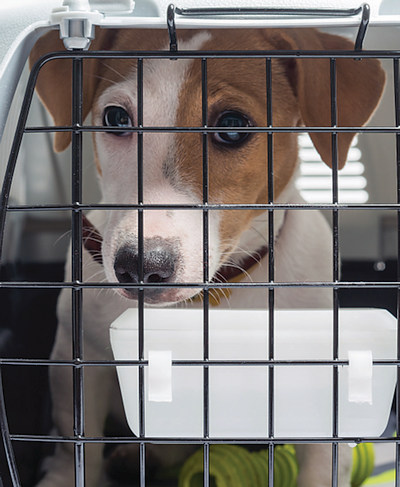
Letting your dog run free can present significant hazards. It’s easier and safer to keep your puppy in a gated area or kennel while training, housebreaking or while you’re away from home.
Away from home, keep your dog on a leash. Don’t allow him to approach other dogs without the owner’s permission. Some dogs may not be as friendly as yours, and fights can ensue.
Be aware that flexi leads can be dangerous to your dog for many reasons, and a dog on a flexi lead is not truly contained.
Your dog also should be contained in the car. Every year, hundreds of stories emerge of dogs that are lost after a car accident, because they escape and are frightened. Thankfully, many are found but some are not.
Confining your dog to a crate or seatbelt in the car will also keep him from becoming a projectile if you have to stop fast or worse, have an accident.
*When you need a vet:
Dog fight. If your dog is in a fight, take time afterward to carefully go over him. Puncture wounds can become infected, so it’s imperative to find them. Your dog may need antibiotics. If you find open wounds, time to call the vet. He may need stitches, drains or medications. Make sure your dog and the “other guy” are current on Rabies vaccinations.
Car accident: If you have an accident and your dog is not contained, have him checked for bruises, broken bones or other injuries, much as you would yourself. If your dog is hit by a car, it’s an emergency, see a vet asap. He may have internal injuries.
3. Put your hands on your dog every day.
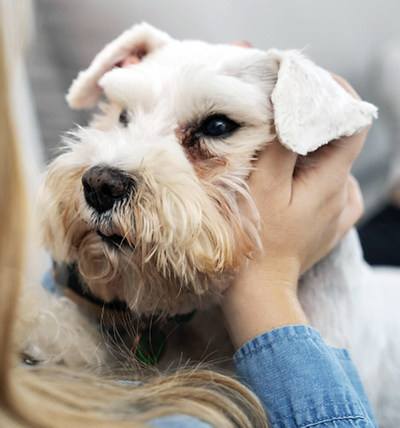
Touch your dog, all the way to the skin, including feet and ears. Check out his teeth often. By doing this, you’ll quickly find things that shouldn’t be there before they become serious.
Look for lumps, bumps, skin sores or rashes. Feel between the pads of the feet for swelling, foxtails, thorns or seeds. Cuts or sores can hide under thick coats and become infected. In the mouth, look for reddened gums or loose or broken teeth. Eyes should be clear and bright.
Generally, anything that doesn’t look or feel right should be suspect.
*When you need a vet:
Lumps and bumps: Many lumps and bumps can be caused by old age, or are benign fatty tumors. But it’s best to have them checked out. It’s an emergency if: the lump is rapidly growing, or painful to your dog.
Foxtails: You can find and remove a foxtail if you can grab it and pull it out. Call a vet if you can see the foxtail but are not able to remove it, or if you observe a red or pus-filled sore or bump between pad or anywhere else on your dog’s body.
Foxtails can enter by the foot or through a dog’s heavy coat, especially on the tummy, near the genitals (especially on male dogs) and near the tail. If you live in a foxtail infested area, check your dog every day.
Rashes and skin conditions: Over the counter medicines are available to treat hot spots, rashes and other skin conditions, but a stubborn skin condition or rash is reason for a checkup. Your dog could have an allergy to food or to a substance in its environment.
*Burns: Always a reason to see the vet.
4. Remove collars and especially dog tags at home and at play.
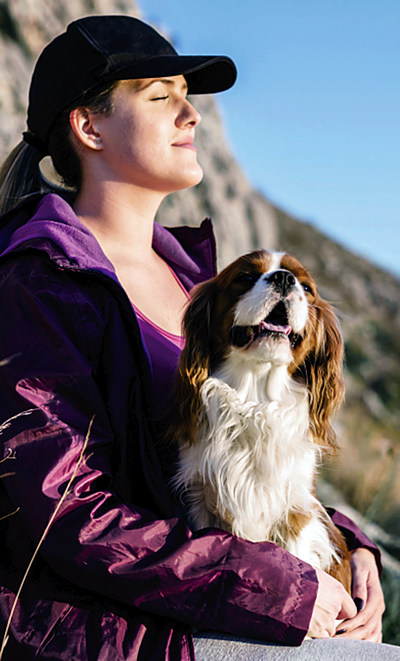
Dog tags can of course save your pet’s life if he becomes lost. But the same tags can be dangerous. If you crate your dog, or if he’s playing with other dogs, or he’s home alone, take his collar off. Tags can become caught in other dogs’ collars, in crate doors, or can drop through floor air grates, trapping and choking your dog.
*When you need a vet:
If your dog has caught its collar in a fence, grate or become wrapped in another dog’s collar, it’s a life-threatening emergency. If you have such an emergency, free your dog as quickly as possible by removing the collar or tag any way possible. Call a vet to make sure no damage to throat or neck has been done.
5. Feed your dog well.
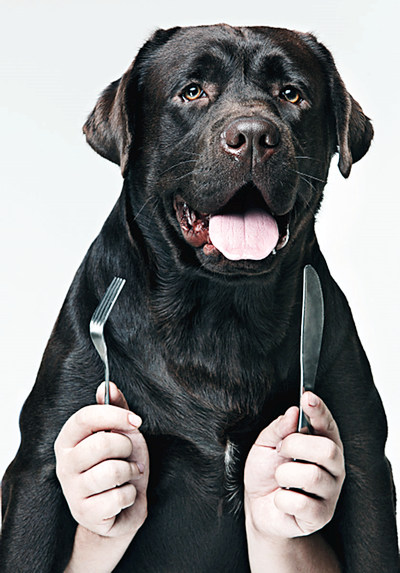
Research and find the right food for your dog, and you’ll have a healthier animal throughout its life. Some dog foods may be cheap, but so is the nutrition.
Be especially vigilant about treats. Never feed rawhide, which can become caught in your dog’s throat or cause serious digestive issues. Some grain-free diets have been linked to cardiac conditions in dogs. It’s best to educate yourself on what is best for your dog.
The American Kennel Club says that finding a healthy, affordable, dog food that’s appealing to your pet is often frustrating. Find some tips on choosing at: tinyurl.com/5n7w6hwh.
*When you need a vet:
If your dog’s coat looks dry, scruffy, or unhealthy, and you are feeding a good dog food, you might try a good supplement such as salmon. If your efforts to feed good food and supplements fail, it’s time for a vet visit.
6. Keep your dog properly groomed.
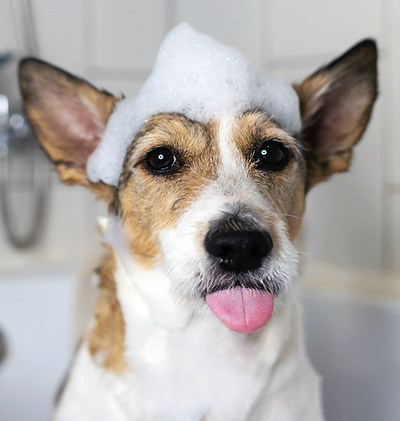
Regular grooming will keep your dog from becoming matted, which can trap debris and cause skin problems, and a proper nail trim will protect your dog’s feet.
If you allow your dog to become matted, expected a much higher bill and a very uncomfortable time for your pet. Commit to either learning to trim your dog’s nails yourself (you can do it!) or start early with a groomer so your dog will allow trimming without a fight.
*When you need a vet:
Beware of topical pest treatments. There are many natural flea and tick treatments available that work well in all but the most persistent cases. It’s an emergency if: You use a topical flea/tick product that causes a serious rash or burn, or if your dog becomes ill after using such a product.
7. Take care of your dog when recreating.
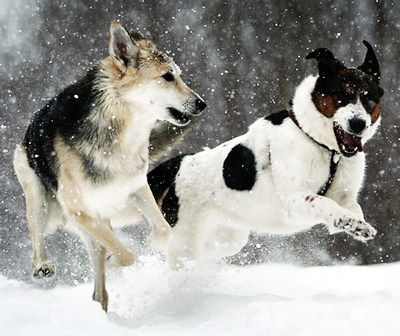
Your dog is subject to many of the same things that can trip you up when recreating outdoors. They can suffer heatstroke or frostbite, pulled muscles and other injuries.
Many people don’t realize that hot pavement can severely burn your dog’s pads, and rough surfaces can cause them to be footsore.
Short-nosed breeds are more vulnerable to heat and breathing problems. These dogs shouldn’t go on long hikes, especially when it’s hot outside. But even larger, longer nosed dogs can have problems if they are overweight or otherwise not in condition.
Most dogs love playing ball, but some are obsessed to the point that you will need to call a halt before your dog begins overheating or overworking.
*When you need a vet:
Heat stroke: If an animal is suffering from excessive exercise or other causes, it is an emergency. Some signs of heat stroke are rapid panting, dark or bright red gums, dry tongue, staggering, stupor or seizures, bloody diarrhea or vomiting. See your vet immediately.
8. Always look for any abnormal activity in your pet.
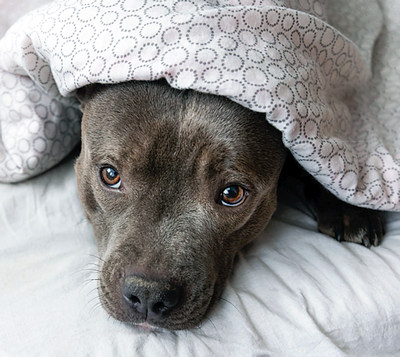
To protect your pet, keep an eye out for anything that is out of place. Most illnesses or injuries can be treated if found early, and you are the early warning detector.
*When you need a vet:
Balance or movement problems. Can indicate neurological problems.
Crying or whining, or shying away. Can indicate injury.
Aggressive or unusual behavior. Can indicate illness or injury.
This article is not in any way an exhaustive list. Generally, only you will know if something is “off” with your pet. The internet provides many resources, but use your gut instinct to protect your pet.


